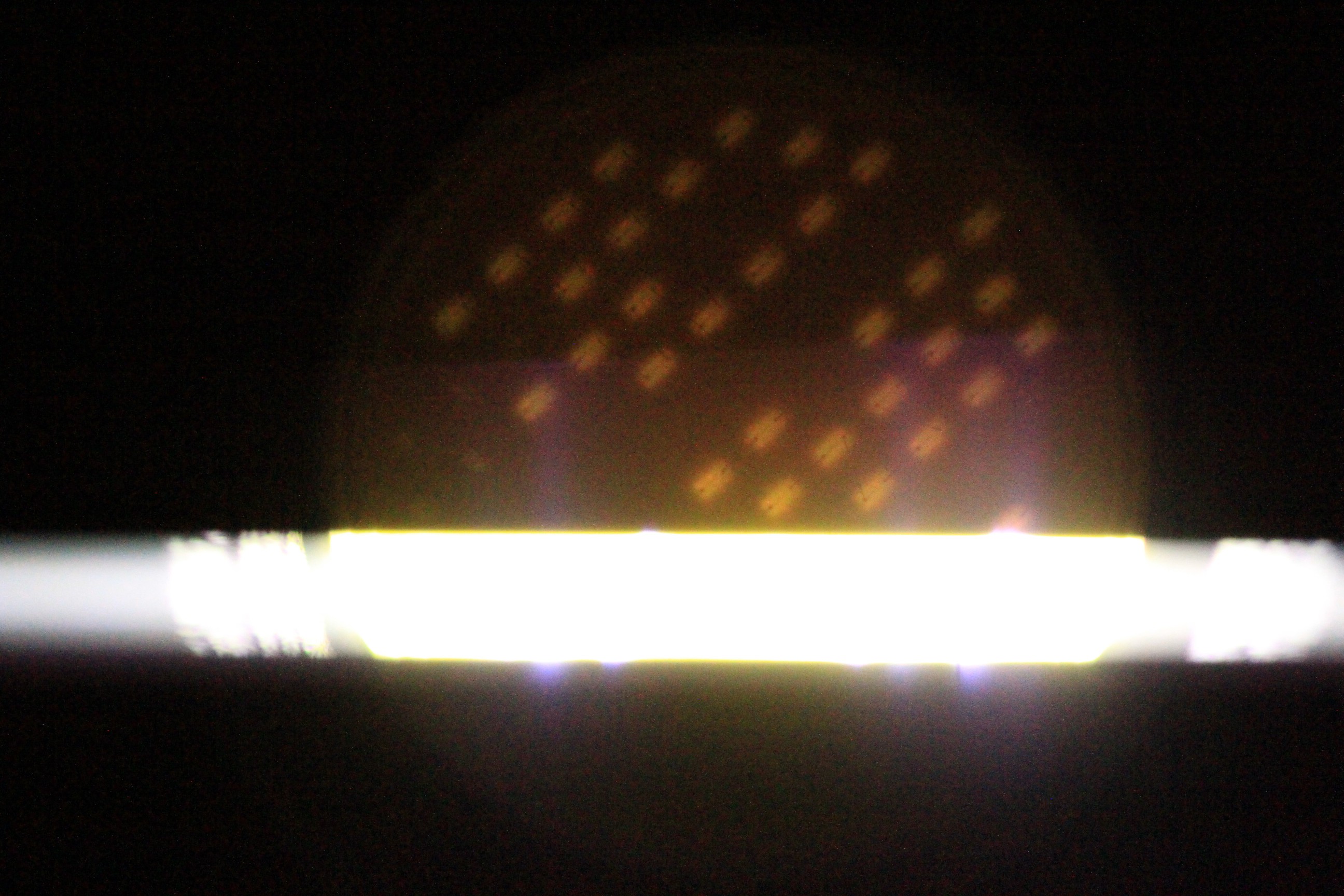The Potential Problem
I've received a few comments regarding the type of LED that Edgerton uses. Specifically, the LED's may not turn off fast enough. This is a problem I didn't really consider previously, given a statement in the Cree application note (pp. 10: The typical turn‑on time for an device is on the order of 10 nanoseconds or less). Since they turn on in 10 ns, why can't they turn off as fast?
Well, it turns out that the LED's use a little trick to make white light. The actual LED modules make a blue light, and a layer of phosphor in front of the LED's turn the blue light into a spectrum of light ('white light'). While the LED's can turn on and off quickly, the phosphor is delayed in turning off (and maybe on - I don't know yet). Notably, Edgerton's primary competition (Vela One) appears to use a similar type of LED and the manufacturer defends their flash durations on their website.
Experimental Proof Of A Minor Problem
Here's an experiment that demonstrates the problem. It's a photograph of the LED flashing a 1-microsecond pulse. There are three stages of the flashing cycle observed here: The bright strip of light is the 1-microsecond flash, the illuminated dots above are the LED modules AFTER the flash, and the darker area below are the LED modules BEFORE the flash.

Before explaining how this image works, I'll explain what it tells me. The LED's above the flash strip show that there is some lag in turning off. But during the turn-off time, the phosphor doesn't output much light. In other words, the LED is incredibly bright for one microsecond, but then becomes dimly lit for some time afterward.
Now an explanation of the image. DSLR cameras have a focal-plane shutter that has a 'rolling effect'. At shutter speeds below the 'X-Speed' (about 1/200th of a second), the bottom shutter opens completely before the top shutter begins closing.

At faster shutter speeds, the top curtain begins closing before the bottom curtain is fully opened. The photograph of the LED was taken at 1/8000th of a second (fastest speed for many DSLR's, including my 7D).

So the slit is moving at a rapid speed, and the bottom part of image was actually exposed before the top part (since the image is inverted, the shutter curtains move down while the image is moving up). So applying some math, we can give the image a timeline.

The flash is much too quick to calculate the flash turn-on and turn-off time using this method (0.04 pixels per microseconds!), but since the LED's at the top of the image are still partially illuminated, we can definitely say that the turn-off time is greater than about 1/8000th of a second (125 microseconds). We can also say that the illuminated LED modules are FAR dimmer than the slit of light, so it doesn't seem to be a problem.
UPDATE 2019-06-05 - I was thinking about this on my commute and realized the math must be wrong. The shutter is moving 4 px/microsecond! That's actually fast enough to determine the turn-off time with better testing.
A Better Experiment
Directly measuring the light output over several microseconds would require some specialized equipment. Thankfully a fine community member, NQTRONIX, has graciously offered some assistance and the use of an active light-measuring probe which can work with my oscilloscope. I will update this project when testing with the active probe is complete.
 Tyler Gerritsen
Tyler Gerritsen
Discussions
Become a Hackaday.io Member
Create an account to leave a comment. Already have an account? Log In.
LEDs are mostly used in all the houses because they can give us comfort while in the mood of rest and they can check more at https://bestonlinewritingservice.com/ to complete the task. But some problems occurred in most of the LEDs. They take more time while switching off. All detail about this topic is given in this article.
Are you sure? yes | no